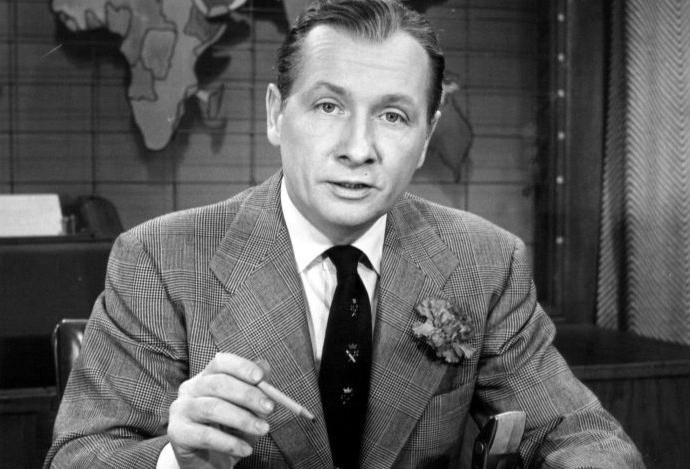Amidst the media tumult over NBC anchor Brian Williams’ apparent journalistic crimes, a little history on the role of the news anchor can help with some big questions. How did we get here: a place where news organizations put so much power in one person, a place where that person is allowed – even encouraged – to frequent entertainment and “fake news” shows?
Contrary to popular belief, the anchor has not always dominated American television news (a topic I’ve recently written about for American Journalism). The title wasn’t even affixed to the nightly newscaster until the mid-1960s.
But over time, the position’s prominence has grown, influencing the economics and control structure within news organizations. And as we’ve seen, the rise of the star anchor can hamper the news gathering ability and journalistic integrity of major media networks.
Anchoring the…Quiz Show?
When television gained a large audience in the late 1940s, the main newscaster was hardly the most important element of the broadcast. As late as 1948, NBC’s main offering, The Camel Newsreel Theater, was controlled by the advertiser and a newsreel company. The narrator was never even seen by viewers.
CBS spent the 1940s creating the newscast format we know today, with a newscaster guiding the viewer through the news. But over the course of a few years, CBS used more than a dozen newscasters, considering the role less important than the visualized stories.
In 1948, CBS executives settled on Douglas Edwards for its nightly newscast, mainly because none of the famous Murrow Boys of CBS Radio wanted the job. The next year, NBC switched to the newscast format and the sponsor wanted John Cameron Swayze to be the face of the renamed Camel News Caravan.
Swayze was television’s first “anchor man,” but not for his newscasting. In addition to news, he was also a permanent panelist on the quiz show Who Said That? Since the other celebrity panelists came and went each week, Swayze was called the “anchor man” of the quiz show, because he was the one permanent personality. NBC and media writers clearly distinguished between his role as “anchor man” on the quiz show and his position as newscaster on the nightly news. The designation of “anchor man” then spread to other quiz shows in the late 1940s and early 1950s.
The term transitioned from quiz shows to formal news in 1952, when Walter Cronkite was chosen to lead the political convention coverage. In a CBS press release, his role was described as “anchor man.” Cronkite became a hit with viewers so CBS continued using the anchorman descriptor. From the mid-1950s through the mid-1960s, the term became synonymous with political convention and election night coverage.
Even when Walter Cronkite replaced Douglas Edwards on the CBS Evening News in 1962, he was considered an anchor only during political conventions and a newscaster on the nightly news. Meanwhile, the anchorman designation faded from quiz show use after Swayze left Who Said That?
Prominence Equates to Power – and Control
While Cronkite is usually celebrated as television’s first and most iconic anchorman, another aspect of his 1962 promotion can be viewed as the start of the slippery slope that has led to today’s problem at NBC. Cronkite not only became the main newscaster for CBS, but he also insisted on the title of managing editor – which gave him overall control of the newscast.
As Cronkite became the most famous face at CBS, he also had final say over the network’s signature broadcast. With Cronkite’s long and celebrated journalism career, few questioned his credentials for the managing editor title. Staff members did learn Cronkite expected to be on camera for at least six minutes during the newscast. They started referring to his on-camera time as “the magic.”
“Anchor” started to replace the term “newscaster” in television news in the mid-to-late 1960s, after television news surpassed newspapers as the most popular news medium in the United States. The rise of television news coincided with a period political scientist and media scholar Daniel Hallin calls the “high modernism” era of journalism – when journalists promoted the idea that they were objective and uniquely qualified to publish and present the news of the day. It was a time when Walter Cronkite could confidently look in the camera and finish each broadcast with “And that’s the way it is.”

